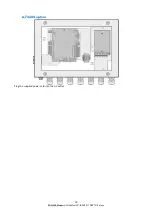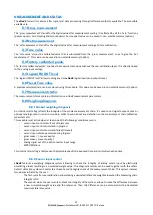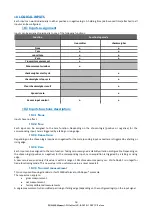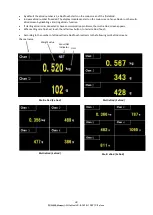
30
SCAIME Manual : NU-eNod4C-E-0418-196712-F.docx
7
FILTERS
There are four available filtering levels which can be associated:
•
filtering
related to the A/D conversion rate
including rejection of the mains frequency (50 or 60 Hz)
harmonics.
•
low-pass Bessel filter
•
notch filter
•
self-adaptive filter
7.1
Filtering related to the A/D conversion rate
The signal resolution is related to the conversion rate. The conversion rate might be chosen as low as possible,
particularly for static applications. For dynamic applications, a compromise must be found between the measurement
rate and the low-pass filter cut-off frequency. The
eNodView
software can be used to determine appropriate filter
values. Choose a measurement rate that rejects the mains frequency harmonics according to the place of use, 50 or
60Hz.
7.2
Bessel low pass filter
A low-pass digital filter can be applied as an output of the A/D converter. The filter orders (available values are 2, 3 or
4) and cut-off frequency are adjustable.
eNodView
software can be used to determine appropriate filter values.
7.3
Notch filter
A notch filter might be applied as an output of the low-pass filter (if used) or the A/D converter. It allows attenuating
the frequencies within a band defined by high and low cut-off frequencies. The
eNodView
software can be used to
determine appropriate filter values.
7.4
Self-adaptive filter
This filter can be set in cascade after previous filters. It is particularly efficient for static measurements but avoid using
it in dynamic or dosing processes. The aim of this filter is to eliminate erratic measurements and to average consistent
measurements.
















































